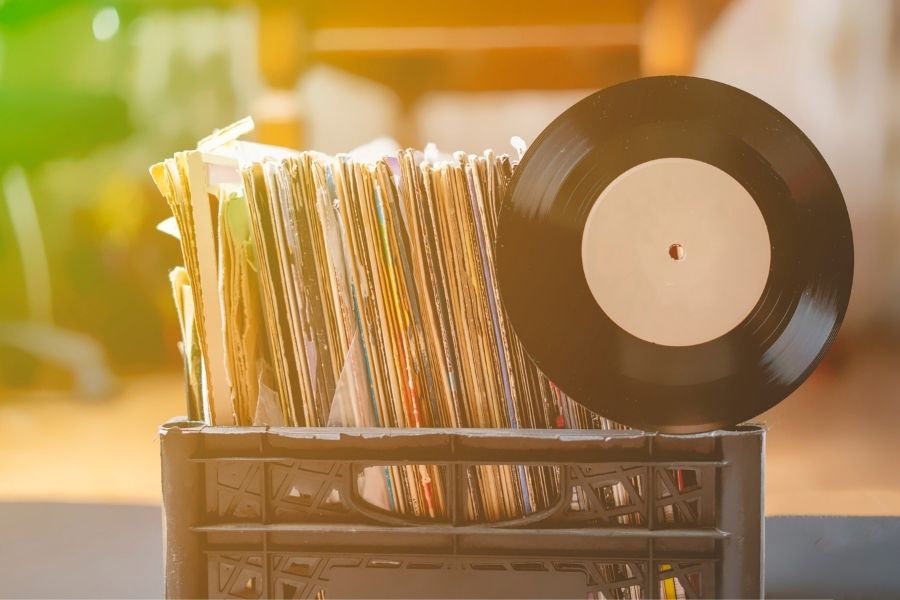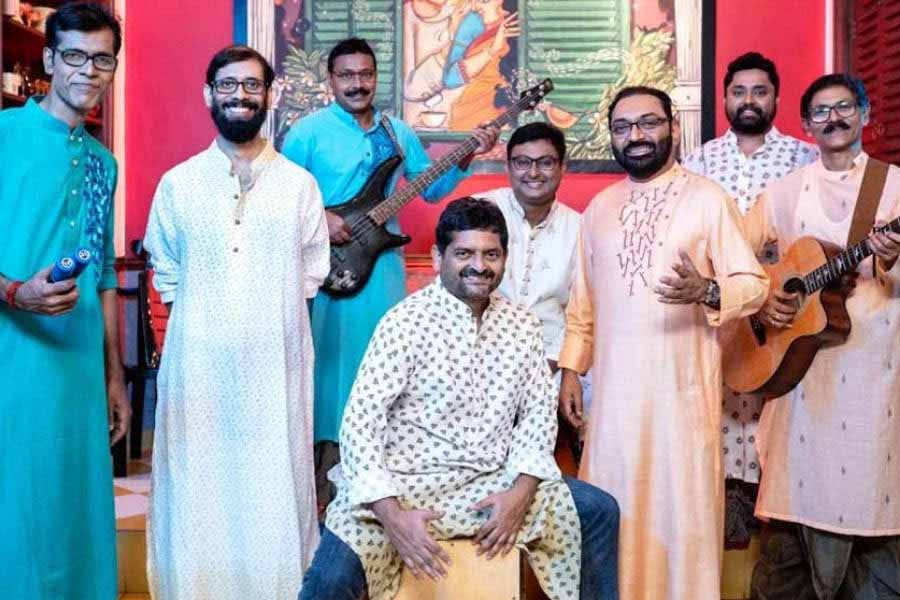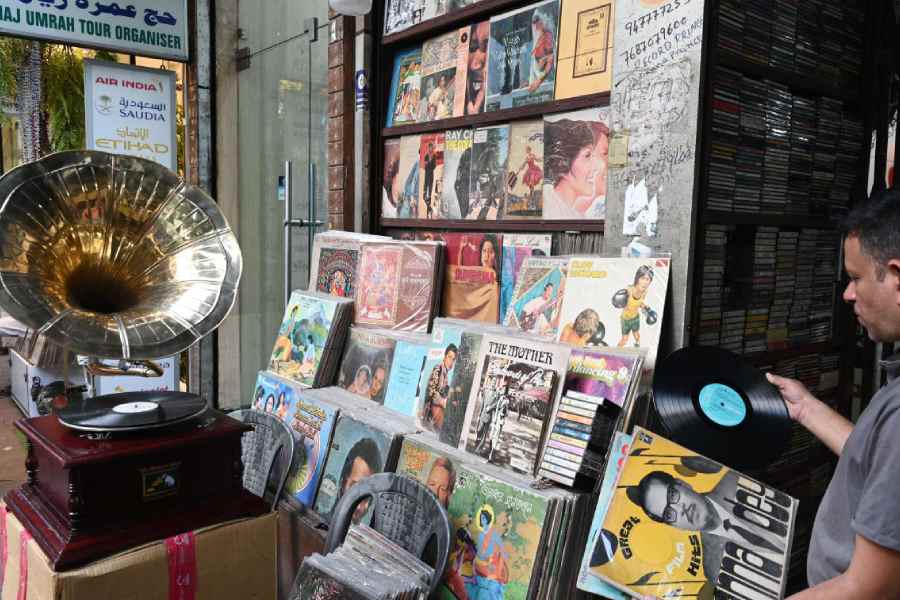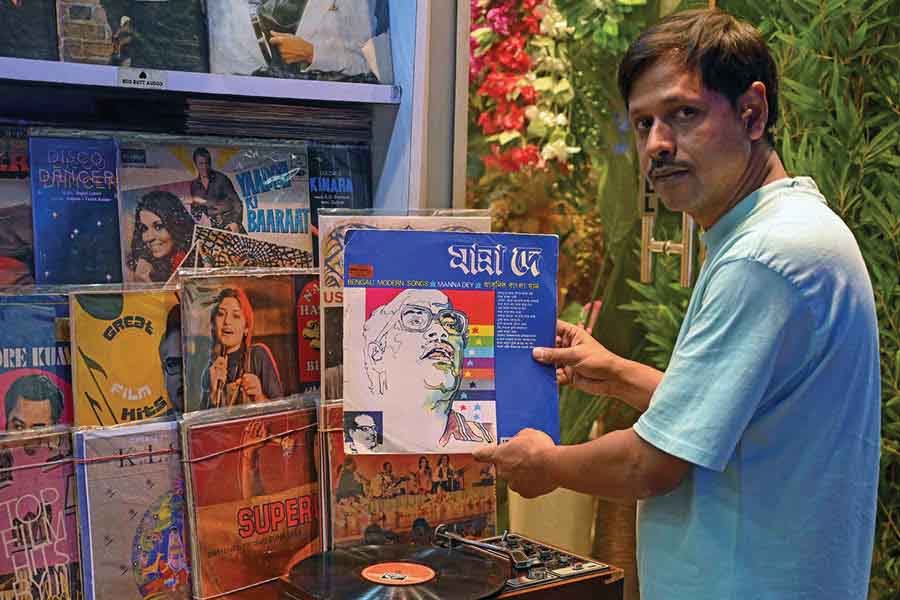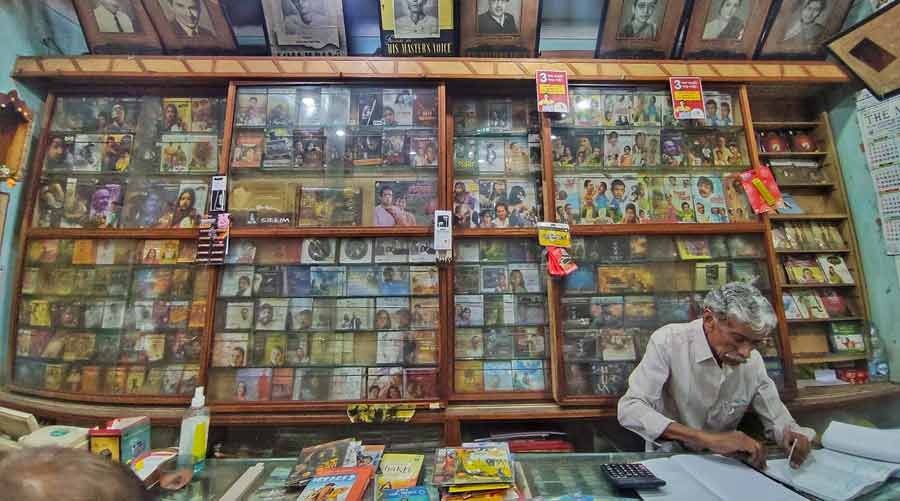For several homes in Kolkata and in various parts of India, music at home often invokes memories of Bade Ghulam Ali, Angurbala Devi or Debabrata Biswas’s voice filtering out of a record player. Collecting LP records was a passion for music aficionados — one often passed down from through generations.
For a long time, records, or LPs, were the only medium of listening to music. Before Chitrahar and evening digital mediums took over, families would gather around a record player to enjoy the latest numbers. With electronic and digital mediums — cassettes, CDs, iPods and the Internet — gaining popularity, records hit a rough patch. Shops shut down, and it became difficult for collectors to acquire new records.
Over the last few years, however, LPs have made a comeback. With alternate music picking up pace and social media finding a new trend — bringing back the phonograph medium to record music — vinyl has found a new lease of life.
Taylor Swift and vinyl revival
The first record was played in 1877, after Thomas Edison invented the phonograph machine. The first commercial record was released in 1895. The first LP record was introduced by Columbia Records in 1948. LPs reigned the music space until cassettes and CDs became the ‘in thing’ in the 1980s and ’90s.
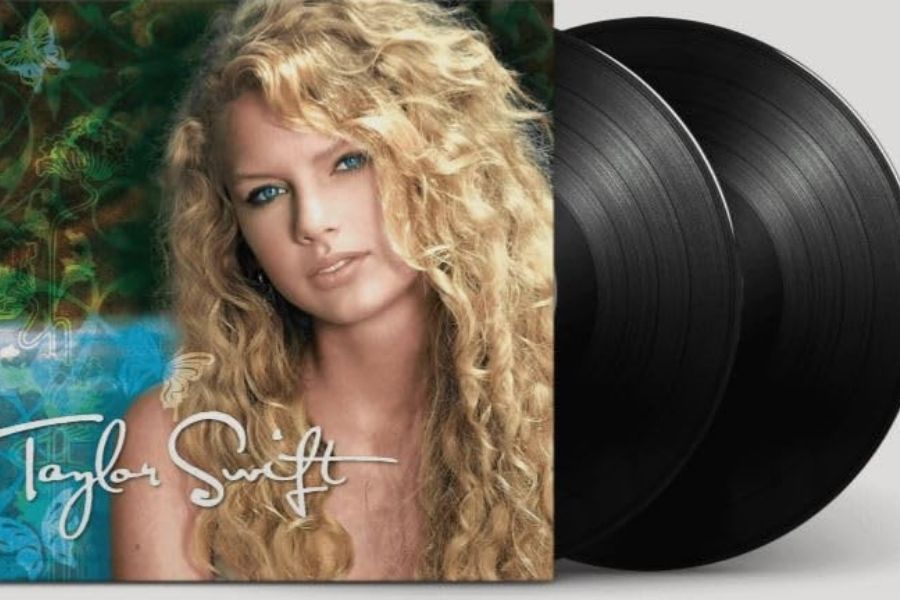
In 2006, pop sensation Taylor Swift’s titular album, ‘Taylor Swift’, was released in multiple formats including vinyl
While the records industry continued to produce vinyls on a much smaller scale for a niche audience, LPs began making some noise again in the early 2000s.
In 2006, pop sensation Taylor Swift’s titular album, Taylor Swift, was released in multiple formats including vinyl. The global music market saw an increasing customer base for LPs. The vinyl resurgence started taking place around 2007 in the west. In the UK, the rising indie rock listeners created chartbusters of records. Music bands like Pink Floyd and their vinyl album, The Endless River, in 2014 and labels like Sony announcing production of records in 2017 added to a building dialogue around the LPs. Social media played a big role too, with the nostalgia factor of records becoming a trending topic, and vinyls were making a comeback.
From Swift’s The Tortured Poets Department to popular Bengali music band Chandrabindoo releasing their 35th-year album Talobasha in vinyl — more and more big names in international, national and regional music have been adding to the rising wave by producing their music on LPs, continuing its new growth in the music industry.
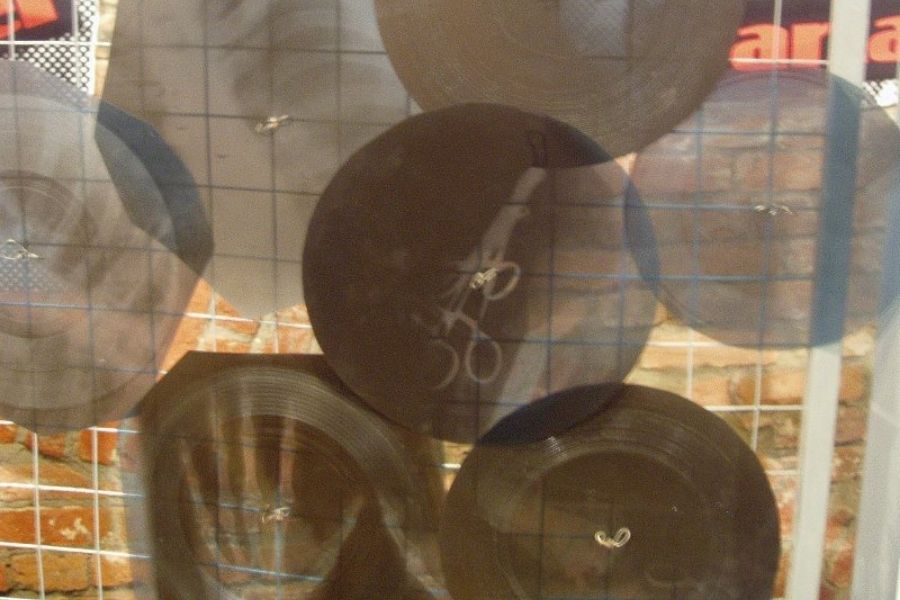
‘Ribs’ records from the 1950s, USSR Wikimedia Commons
Through it all, however, what has remained constant is passionate collectors’ zeal to continue preserving and collecting records. Before the revival in the 2000s, the love for vinyl records gave birth to a practice called ‘ribs’, ‘music on ribs’ or ‘bone music’, where x-ray plates, collected from the trash of hospitals and health clinics, were recycled to make records for gramophones. Popular in the 1950s and ’60s in the Soviet Union, ribs music was smuggled into the USSR where it was banned, and records of popular music bands and artistes of the time, from The Beatles to The Rolling Stones, found their way to the record lovers in the Soviet.
Let the music play
During the slump, for people who never stopped listening to LPs, it was all about caring for their existing collection, and finding sources to build it. Visual artist Sanjoy Chatterjee from Kolkata started collecting records when he was 10 years old, and is carrying forward a tradition started by his grandfather, and listening to records has become a habit.
“I have collected almost 900 records. I still listen to them, and also to my father’s collection of classical music and Bollywood music. I love them, and have a bond with these records,” Sanjoy shared with My Kolkata.
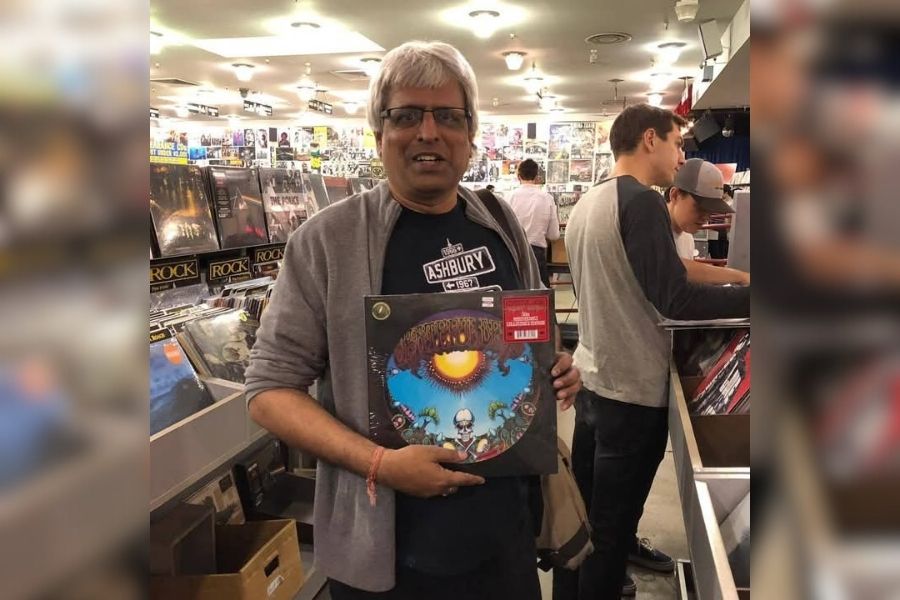
Babi Mitra at a record store in the US
For Kolkata audiophiles, stopping by at the music gully of Free School Street, Symphony & Gramophone Stores at Esplanade, or heritage store Melody, has pretty much been a routine. For retired music retailer Babi Mitra, the search for LP records also took him to the US.
“When I was growing up in the 1970s, there were LPs or cassettes, and the radio. Television was not as popular. Music lovers would buy records because the audio quality was better than the cassettes,” reflected Babi. While he isn’t a regular buyer anymore, he is the proud owner of some 500 records.
“The return of LPs have been going on for quite some time,” Babi said, attributing the rise to the audio quality of LPs, which features high on the list of any music lover. “LPs give you the closest sound to the natural live sound of the music,” he said.
Compared to Mumbai or Delhi, Kolkata has fewer brick-and-mortar vinyl record stores, but in recent times, online shops like Free School Street Records are popularising vinyl records among the new generation, who are eager to explore something from the past. The record store is a click-stop among veteran collectors too, from various parts of the country.
Another collector, with a whooping 2600 records, is Kolkata boy Aveek Chatterjee, who takes great care to elevate his music listening experience. He keeps updating his music system and recently upgraded to a Technics SL-1200 MK7 turntable with Marantz PM 6006 amp and Q Acoustics 3020i bookshelf speakers.
Aveek grew up with a Garrard recorder from the UK at home, and his father’s custom-made setup from the Harry’s Music at Grand Hotel Arcade at Esplanade. Looking back to the time when records were not as easily available anymore, Aveek remembers “collecting cassettes and CDs to listen to music” and turning to them on days when the LPs weren’t playing at home.
For many lovers of vinyl, a common answer when asked why they pick LPs over electronic or digital mediums, is intimacy — like when you touch a book and smell the freshly printed pages.
Another collector, Sujit Sinha, believes the same thing. He also believes that his search for pre-loved records helped keep his listening habit alive. From hitting small record shops and antique markets to following classified advertisements in newspapers, the record-buyer has always taken the extra mile to keep this collection growing.
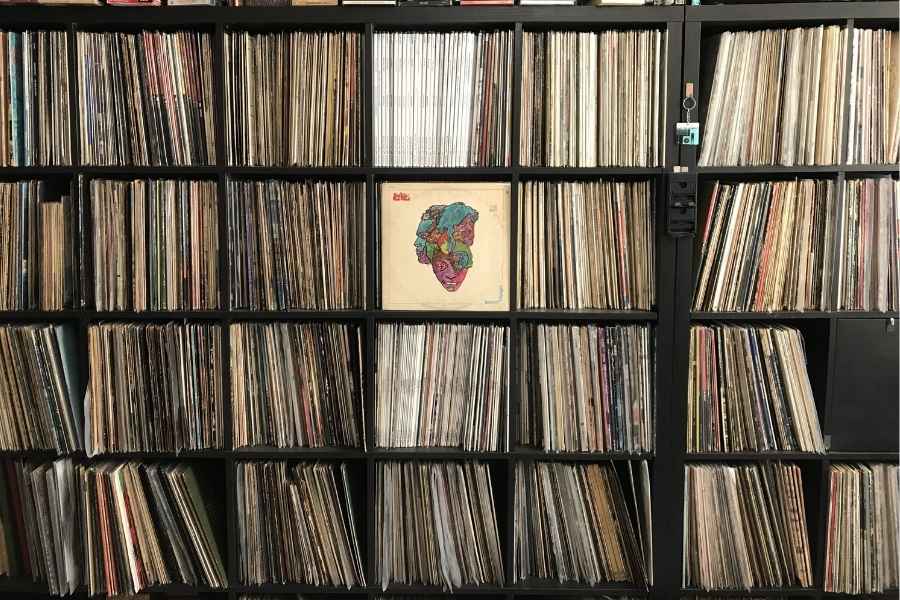
Sujit Sinha’s record collection
“There was also always a community of friends and acquaintances who used to give information about listeners willing to let go of their vinyls as they thought they had become obsolete and inconvenient with the advent of CDs,” shared Sinha, a private sector professional.
Sinha, who has almost 5,000 records, started his collection in the late ’80s after picking up the hobby from his father. “I have never been in a phase where I have not collected records,” he said.
For record collectors, album art like covers and record sleeves add to the charm and experience of listening to music. The artwork on them or the information about the band or the musician’s journey makes the records an interesting read too.
TLC for record players
When LPs lost their sheen, it became difficult for collectors to maintain their record players as well. E-commerce sites like Ebay helped them source spare parts for the repair and upkeep of players.
“The two main parts needed were getting the right size of the Belt (for Belt Drive Turntables) and the Cartridge/ Stylus. Otherwise, the turntables were robustly made to last for years in their regular mechanisms,” shared Sinha, who recalled how tedious it was to get the players serviced and keep them functional when the trend was dying. He also shared that most ardent listeners had more than one player as backup, and often had to wait for almost a year or more if a player was malfunctioning and needed a repair.
Some, like Babi “kept playing the records” to keep the player operational. For servicing, they banked on senior technicians at old record shops in Kolkata, Delhi, and Mumbai.
How to buy a LP player, and where to find records in Kolkata
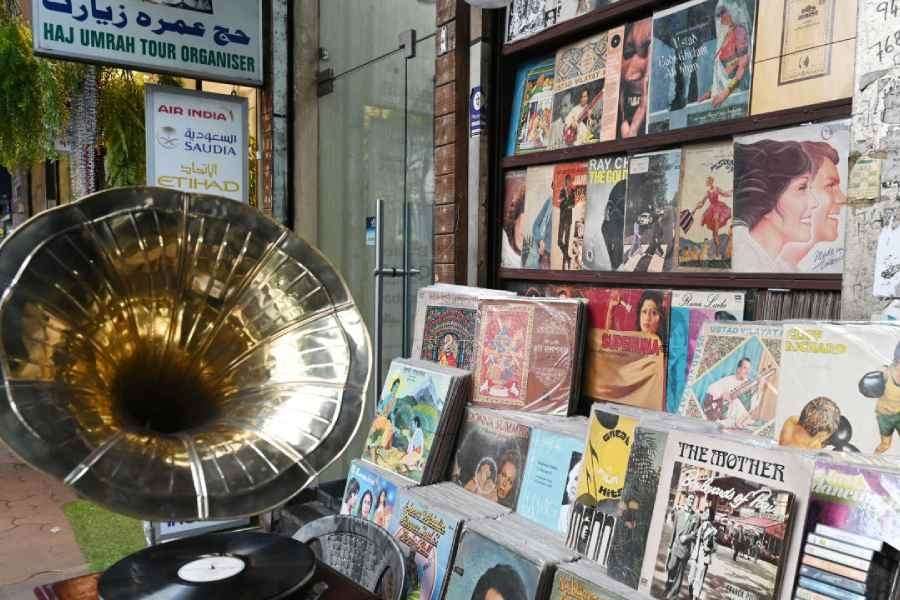
A vinyl records store on Mirza Ghalib Street TT Archives
Few popular online shops to buy LP players are The Revolver Club, Drocer Record, and the Calcutta Records, apart from banking on popular shopping sites like Amazon. In Kolkata, there’s the Vinyl Records and Gramophone Shop and the Western Pop Music in Mirza Ghalib Street.
What is ‘pressing’, and are there vinyl pressing plants in India?
Pressing or LP record pressing is how vinyl records are made. “Biscuits” or PVC pellets are heated and compressed to give the shape of records. Metal plates called stampers are used to give the vinyl records their shape. They are then stamped, cooled and trimmed.
HMV’s (now Saregama) plant in Kolkata’s Dum Dum, where vinyl records were pressed, is an integral part of the city’s record heritage. Mumbai has a new vinyl manufacturing plant, Samanvii Digimedia Art & Solution.
Vinyls are here to stay
According to the Vinyl Records Business Report 2023-2030, published on Globe Newswire, vinyl sales are “projected to reach $2.4 Billion by 2030, growing at a CAGR of 7.1% from 2023 to 2030”. The report further states that “collectors and younger generations seeking to connect with music history and experience albums as they were originally intended further contribute to market growth. Additionally, the rise of Record Store Day and similar events has galvanized a community of vinyl enthusiasts, boosting sales and fostering a culture around vinyl collecting.”
So, those who are nurturing an old love and those who have found a new passion in LPs, can rest easy because it seems vinyl records are here to stay, through online or offline stores.
